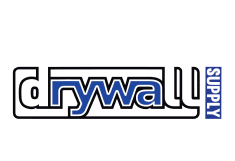[ad_1]
When working on a DIY home renovation project that involves drywall installation, choosing the right drywall screws is crucial. Using the wrong type of screws can lead to a variety of issues, including cracks, sagging, and even structural damage. In this guide, we will discuss the different types of drywall screws available on the market and provide tips on how to choose the right one for your project.
Types of Drywall Screws
There are several different types of drywall screws available, each designed for specific applications. Understanding the differences between these types will help you choose the right screw for your project.
Coarse Thread vs. Fine Thread
One of the first decisions you’ll need to make when choosing drywall screws is whether to use coarse thread or fine thread screws. Coarse thread screws are designed for attaching drywall to wood studs, while fine thread screws are better suited for attaching drywall to metal studs or other metal framing. Using the wrong type of screw could result in a weaker connection and increase the risk of the drywall coming loose over time.
Length
The length of the screw is another important consideration. The screw should be long enough to penetrate both the drywall and the underlying stud or framing member by at least 1 inch. Using a screw that is too short can result in a weak connection, while a screw that is too long can cause the drywall to crack or bulge.
Head Type
Drywall screws typically have either a bugle head or a flat head. Bugle head screws are designed to sit flush with the surface of the drywall, while flat head screws sit slightly below the surface. Bugle head screws are generally preferred for most applications because they are less likely to tear the paper facing of the drywall.
Material
Drywall screws are typically made of either steel or stainless steel. Steel screws are more affordable and are suitable for most interior applications. However, if you are working in a damp or humid environment, such as a bathroom or kitchen, stainless steel screws are recommended to prevent rust and corrosion.
Choosing the Right Screw for Your Project
Now that you have a better understanding of the different types of drywall screws available, here are some tips to help you choose the right screw for your project:
Consider the Material
If you are working with metal framing or installing drywall in a damp environment, opt for stainless steel screws to prevent rust and corrosion. For most interior applications, steel screws will suffice.
Length Matters
Make sure to choose a screw that is long enough to penetrate both the drywall and the underlying stud or framing member by at least 1 inch. Using a longer screw can cause the drywall to crack, while a shorter screw will result in a weaker connection.
Head Type
For most applications, bugle head screws are preferred because they sit flush with the surface of the drywall. Avoid using flat head screws, as they can tear the paper facing of the drywall.
Buy in Bulk
It’s always a good idea to buy drywall screws in bulk, as you’ll likely need more screws than you think. Having extra screws on hand will ensure that you don’t run out in the middle of your project.
FAQs
1. Can I use regular screws for drywall installation?
Regular screws are not recommended for drywall installation. Drywall screws are specifically designed to attach drywall to studs or framing members and provide a secure and long-lasting connection. Using regular screws can result in weaker connections, cracks, and other issues.
2. How do I know how many screws to use per sheet of drywall?
As a general rule of thumb, you should use a minimum of five screws per stud or framing member when installing drywall. This ensures a secure attachment and helps prevent sagging or other issues. However, you may need to use additional screws around the edges of the drywall sheets to prevent them from bowing.
By following these tips and guidelines, you can choose the right drywall screws for your DIY project and ensure a professional and long-lasting finish. Remember to always use the proper tools and techniques when installing drywall to achieve the best results.
[ad_2]


